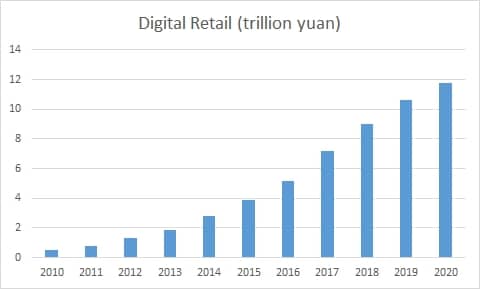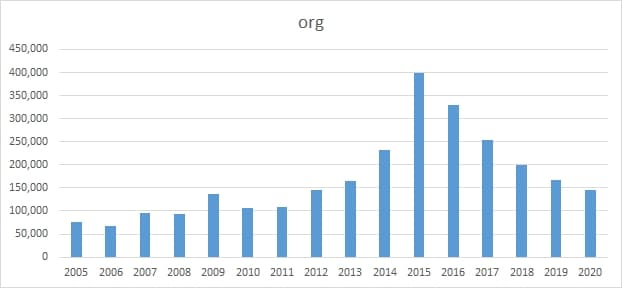.Com would be growing if it weren't for China. Verisign (NASDAQ: VRSN) reported third-quarter earnings after the market closed yesterday. The combined base of .com and .net domain names continues to shrink, which the company blames on lackluster ... Continue Reading5 Comments
Top foreign brands give clues on investing in .cn domains
· UncategorizedSee how these major global brands approach the Chinese market, domain-wise. You can learn a lot about investing in .cn by looking at how top foreign brands handle this extension in their domain strategies. I picked the first 10 foreign brands ... Continue ReadingLeave a Comment
A useful website to learn more about the China domain market
· UncategorizedWant to dig into China's domain opportunities? Start here. The China Internet Network Information Center (CNNIC) website provides useful data to help you decide how to invest for the China domain market. Of particular interest to domain ... Continue Reading2 Comments
Three recent numeric domain sales and possible Chinese meanings
· UncategorizedHere are some possible uses for these recent NNNN domain sales. When reading recent domain sales recently, I came across three interesting numeric domains ending with either 98 or 99, which are familiar to Chinese consumers as having the meanings ... Continue ReadingLeave a Comment
CAICT report on the Chinese domain industry
· UncategorizedThis report shows what domains are big in China. The China Academy of Information and Communications Technology (CAICT) recently released a research report (Chinese language only) on the Chinese domain industry. I just finished reading it and found ... Continue Reading2 Comments
Domains related to fitness, health, and sports may be the next trend in China
· UncategorizedChina should see increased interest in exercise thanks to a new government plan. The State Council in China announced a fitness plan on August 3 to encourage a healthier population. This may create a boom in the fitness space and, thereby, boost ... Continue ReadingLeave a Comment
China’s digital economy and domains
· UncategorizedKassey Lee examines the growth of online commerce in China. I just finished filing my business tax return -- online for the first time. Things have changed rapidly in recent years and I find myself moving more and more into a digital world. Look at ... Continue ReadingLeave a Comment
China Trademark 50 provides clues for domain investing
· UncategorizedKassey Lee examines more data about what domains Chinese companies choose. When running a business, we need to know our customers in order to provide the right products to them. This is also true when selling domains to end users in China. For ... Continue Reading3 Comments
Some English-based domains used by Chinese companies in recent news
· UncategorizedChinese companies often use English domain names. Many investors have the misconception that Chinese companies use only Pinyin domains. On the contrary, I come across English-based domains regularly when reading Chinese news. Here are 10 Chinese ... Continue Reading2 Comments
The problem with selling .org domains to Chinese entities
· Domain SalesHave a .org domain targeted to the Chinese market? Read on. Do you own .org domains intended for Chinese buyers, such as Pinyin domains? If so, you should be aware of restrictions and trends that make aftermarket sales unlikely. The chart below ... Continue Reading2 Comments
















